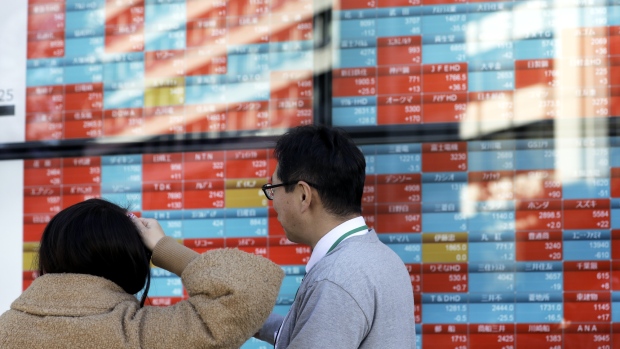Feb 17, 2019
Asian bonds could return up to 10% in best year since 2012
, Bloomberg News

Asia’s dollar-denominated bond market could return up to 10 per cent this year on expectations that policy easing in the U.S. and China will revive risk appetite, according to Lombard Odier Investment Managers.
The asset class has gained 2.4 per cent so far this year in the strongest start since 2012, as buyers snap up bonds cheapened by a late-2018 sell-off. The market fell 0.6 per cent in 2018, the first annual loss since 2013, according to an ICE BofAML index.
“Given the combination of Fed accommodation and China’s easing, we think investors can make anywhere between 5 and 10 per cent in Asian credits,” Dhiraj Bajaj, Singapore-based money manager at the asset management unit of the Swiss private bank, said in an interview on Feb. 14. The top end of that range would be the strongest returns since 2012, the ICE BofAML index shows.
This year’s upturn has room to run amid pent-up demand from fund inflows and lower net supply of new bonds, he added.
Bajaj’s US$1.18 billion Asia Value Fund has returned 5.1 per cent this year through Feb. 13, beating 97 per cent of peers. This year, he has added bonds issued by Hong Kong-based infrastructure group NWS Holdings Ltd. and Indonesian power group Lestari Banten Energy.
Banten’s notes are secured against cash flows from a power plant co-owned by Malaysian conglomerate Genting Bhd. and Chinese energy giant SDIC Power, and the notes offer “attractive yield” of almost 7 per cent for a defensive utility business, he said.
Bajaj said the greatest risk to this year’s debt rally would be complacency where investors chase returns by allowing poor quality borrowers to enter the bond market, or let them price bonds below fair value. There are “known risks” associated with potential surprises in elections in India and Indonesia, he added.
U.S. and China policy outlook
- The Federal Reserve should likely revisit its policy stance this year given slowing growth and peaking rate cycle; reduction in the quantitative tightening program could start as early as 2020
- PBOC to further lower the reserve-requirement ratio and inject liquidity via targeted lending facility; onshore funding costs to ease further, allowing companies to reduce reliance on offshore dollar-bond market
Credit spreads:
- JACI Corporates (blend of high grade and high yield notes): Spreads to narrow to 275 basis points from about 314 currently, versus 2018’s peak of 340
- JACI BB rated bonds: Yields could drop to 6 per cent to 6.25 per cent from about 7.05 per cent currently versus 7.9 per cent in 2018
- JACI B rated notes: Yields could fall to 7.5 per cent to 7.75 per cent this year, versus about 10.5 per cent in 2018





